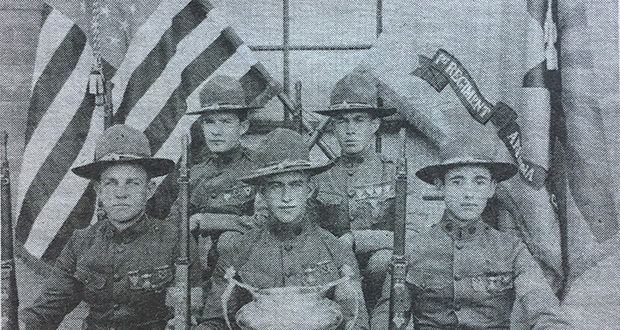From Maley to Willcox
Arizona Capitol Reports Staff//August 4, 2006//[read_meter]
It is said that when cattlemen first arrived in the Sulphur Springs Valley — “Sufferin’ Springs” to local wags — in the 1870s, the lush grasses were hip high. It was considered by many to be the finest cattle country in the West. But by the turn of the century, drought conditions and overgrazing rendered the valley a bleak desert. Nevertheless, the cattlemen stayed on, and by the mid 1930s, upwards of 50,000 heads of cattle were shipped annually from Willcox.
On July 30, 1880, the Arizona Daily Star reported that the “next terminus of the Southern Pacific Railroad will be called Sulphur Valley, 39.9 miles from Benson, and will be open to business some time next month.” Three weeks later, a follow-up report announced that “a new city is started 40 miles east of Benson which is to be called Maley. In a few days they will have a post office.”
In fact, for a brief time the town was called Maley, in recognition of an early rancher. But when the first locomotive roared across the newly laid track, Gen. Orlando B. Willcox, commander of the Department of Arizona, was onboard. He so charmed the handful of early Maley residents that the town’s name was immediately changed to Willcox.
Platted and built by the Southern Pacific Railroad as it nailed track across the Southwest, Willcox was conceived specifically as the shipping center for southern Arizona cattle ranchers. In time it became a commercial center for cattlemen as well, evidenced by the many storefronts visible in this 1940s photograph of Railroad Avenue, the main thoroughfare at the time.
Not unlike other frontier settlements, Willcox had its share of unsavory characters. The surrounding mountains — the Chiricahuas, Dragoons and Galiuros — were havens for rustlers and other outlaws seeking to distance themselves from lawmen. Train robberies were not uncommon, and one of the most notorious was orchestrated by Burt Alvord — the Willcox town marshal.
Warren Earp, the youngest and least known of the famous — or infamous — Earp brothers, worked for Henry Clay Hooker’s Sierra Bonita Ranch. So did a cowboy named John Boyett. Neither liked the other, and a long-running feud developed. It reached its climax in a Willcox saloon — the structure left of the large two-story building at center — when Boyett shot and killed Earp. The coroner’s jury — never mind that Earp was unarmed — found Boyett’s actions justified and turned him loose. The dead man was, after all, an unpopular loudmouth who had threatened the killer on more than one occasion. Earp lies in an obscure grave in an abandoned Willcox cemetery.
Progress came to Willcox in 1897 in the form of an ice plant. In 1899, a generating plant supplied the town with electricity. But hard times made it impossible for residents to pay their bills, and three years later the generator was sold to a town in Mexico. Electricity did not return to Willcox until 1926.
In 1901, a local brewery boasted that it produced 1,000 bottles of beer a day — more bottles than the town had residents.
Today, Willcox is known for its annual “Rex Allen Days,” a tribute to native son Rex Allen, the only Hollywood cowboy who was actually a cowboy.
— W. Lane Rogers. Photo courtesy of author


















